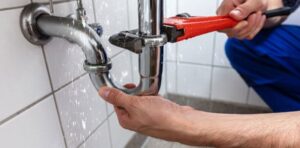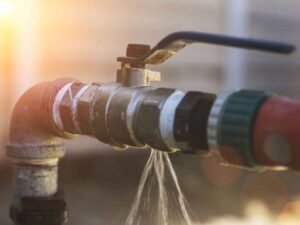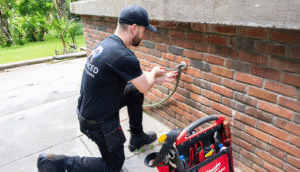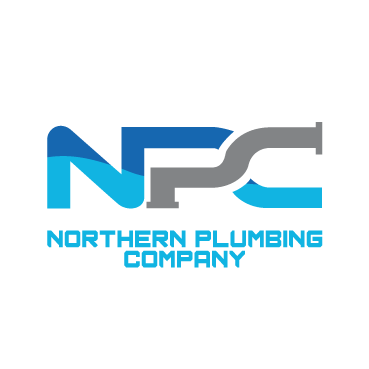Plumbing Checklist for New Homebuyers
What every buyer should inspect before closing the deal.
Buying a new home is one of life’s most exciting milestones — but it can also be overwhelming. Amid all the paperwork, negotiations, and home tours, it’s easy to overlook one critical system: the plumbing.
Unlike paint colors or kitchen cabinets, plumbing problems aren’t just cosmetic — they can lead to costly repairs and serious damage if not addressed early. At Northern Plumbing Company, we’ve worked with many new homeowners who discovered hidden plumbing issues after moving in.
This comprehensive plumbing checklist for new homebuyers will help you spot red flags early, ask the right questions during a home inspection, and make confident decisions before signing the dotted line.

🛠️ Why Plumbing Inspections Matter for Homebuyers
Plumbing systems are mostly hidden — behind walls, under floors, and underground. That makes it hard to know if everything’s working properly just by walking through a home. A missed leak, aging water heater, or outdated pipes can easily cost thousands of dollars to repair.
Getting a handle on a home’s plumbing health upfront gives you:
-
Peace of mind
-
Leverage during negotiations
-
Fewer surprises after move-in
-
Protection from water damage and mold
✅ Plumbing Checklist for New Homebuyers
Use this checklist when touring homes, during inspections, or when hiring a licensed plumber to assess a property before purchase.
1. Check for Visible Leaks
Look under sinks, around toilets, and behind appliances. Small leaks can signal larger issues or indicate poor maintenance.
What to look for:
-
Water stains
-
Mold or mildew
-
Dripping pipes
-
Warped cabinetry
-
Pro Tip: Bring a flashlight to check inside dark cabinets and closets.

2. Test the Water Pressure
Low water pressure can be more than just annoying — it may signal pipe corrosion, hidden leaks, or sediment build-up.
How to test:
-
Turn on all faucets.
-
Flush toilets.
-
Run showers and check for pressure drops.
3. Inspect Toilets for Stability and Leaks
Sit or gently rock each toilet. It should feel secure and not move. Look for any pooling water at the base.
Signs of trouble:
-
Constant running
-
Gurgling sounds
-
Water stains around the base
4. Evaluate the Water Heater
Water heaters are expensive to replace. Know what you’re getting.
Check:
-
Age of the unit (typically found on the label)
-
Rust or corrosion on the tank
-
Signs of leaking or puddles
-
Proper venting and secure connections
Lifespan: Traditional water heaters last 8–12 years. Tankless units may last 15–20.
5. Ask About Pipe Materials and Age
Pipe material determines how long the plumbing system is likely to last.
Common materials:
-
Copper: Durable, long-lasting
-
PEX: Flexible, resistant to corrosion
-
Galvanized steel: Prone to rust, often needs replacing in older homes
-
Polybutylene (gray plastic): Outdated and known to fail
Ask the seller or inspector about the home’s pipe material and whether any replacements have been made.
6. Check Drains for Flow and Odors
Slow drains can signal clogs, poor venting, or deeper sewer issues.
How to test:
-
Run water in sinks, tubs, and showers.
-
Watch for slow drainage or backflow.
-
Smell for foul odors — a sign of sewer gas or buildup.
7. Inspect Outdoor Plumbing & Hose Bibs
Outdoor spigots are often overlooked, but damaged ones can freeze and burst in winter.
Check for:
-
Leaks or drips
-
Proper shutoff valves inside
-
Backflow prevention devices

8. Ask About Sewer Line & Septic System (if applicable)
For homes with older sewer lines or septic systems, serious issues can be expensive and disruptive.
Questions to ask:
-
Has the sewer line ever been inspected or repaired?
-
When was the septic system last pumped?
-
Are there any drainage issues in the yard?
For peace of mind, consider having a video camera sewer inspection done before closing the deal.
9. Evaluate Laundry and Appliance Hookups
Ensure washers, dishwashers, and refrigerators with water lines are properly connected and not leaking.
Things to check:
-
Water shutoff valves
-
Secure hose connections
-
No signs of water damage or mold
10. Check for Signs of DIY Plumbing or Code Violations
Improper plumbing work can lead to long-term headaches. Look for:
-
Mismatched pipe materials
-
Odd layouts or unusual fittings
-
Unpermitted water heaters or remodels
If something looks off, get it professionally inspected.
🧰 Bonus: Questions to Ask the Seller or Agent
-
How old is the plumbing system?
-
Have there been any leaks or major plumbing repairs?
-
Is there a sump pump or basement waterproofing system?
-
When was the last time the water heater was serviced?
-
Do you have documentation for any recent plumbing work?
🏡 Hire a Professional for a Pre-Purchase Plumbing Inspection
While home inspectors offer a general overview, they don’t always catch specific plumbing problems. For added peace of mind, consider hiring a licensed plumber to perform a comprehensive plumbing inspection before finalizing your purchase.
At Northern Plumbing Company, we offer:
-
Full home plumbing evaluations
-
Sewer camera inspections
-
Water pressure testing
-
Leak detection
-
Appliance and fixture checks
🚿 Your Dream Home Shouldn’t Come With Surprise Repairs
Plumbing problems can turn your dream home into a money pit. By following this checklist and getting professional advice, you can avoid unexpected repairs and feel confident in your purchase.
Whether you’re buying your first home or your forever home, Northern Plumbing Company is here to help you every step of the way.
Plumbing Checklist for New Homebuyers Plumbing Checklist for New Homebuyers Plumbing Checklist for New Homebuyers Plumbing Checklist for New Homebuyers Plumbing Checklist for New Homebuyers Plumbing Checklist for New HomebuyersPlumbing Checklist for New Homebuyers Plumbing Checklist for New Homebuyers Plumbing Checklist for New Homebuyers Plumbing Checklist for New Homebuyers Plumbing Checklist for New Homebuyers Plumbing Checklist for New Homebuyers Plumbing Checklist for New Homebuyers
</div hidden>

